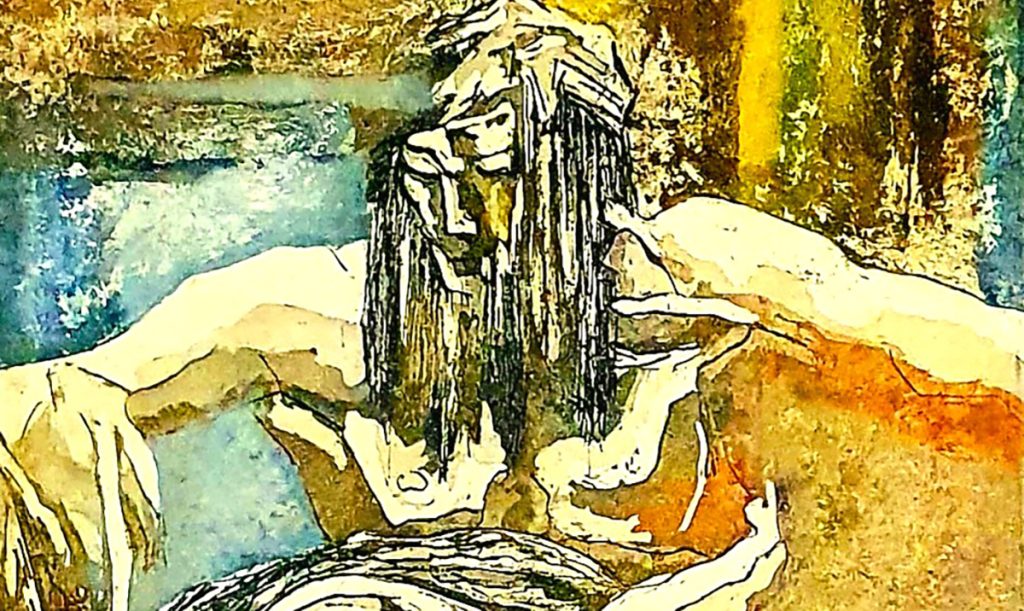Katerina Tsitsela’s art is a journey into the depths of human emotion and perception. From painting to engraving, her work explores what she calls “internal landscapes”—a psychoanalytic approach to capturing the complexities of the human soul. Inspired by Expressionism, Tsitsela’s creative process emphasizes emotion over form, using bold colors, dynamic brushstrokes, and atmospheric contrasts to convey states of being that words alone cannot describe. Her work is a dialogue between light and shadow, chaos and harmony, a constant search for meaning within the depths of the psyche.
Tsitsela’s approach is rooted in her own spiritual and emotional journey, translating intangible experiences into powerful visual statements. Despite challenges within the commercial art world, she remains dedicated to expressing the raw energy of the soul. Through her art, Tsitsela invites viewers to confront their own emotions, fostering a deeper connection between the seen and unseen aspects of existence.

Here is the artist’s interview.
What is your creative process like?
My creative process is deeply rooted in Expressionism, where emotion takes precedence
over form. Each painting is an exploration of intense feelings and inner states, translated
through bold colors, dynamic brushstrokes, and atmospheric contrasts. I don’t simply depict
a scene—I seek to evoke the essence of an experience, something beyond the visible. My
work is a spiritual journey, where intuition leads the way, and every layer of paint becomes a
dialogue between light and shadow, chaos and harmony. The result is not just an image but
an emotional presence, inviting the viewer to step into a world of raw expression and
introspection.
Do any personal experiences shape your work?
My work is deeply influenced by my inner spiritual journey. Each painting reflects my search
for meaning, my connection with the unseen, and my exploration of the depths of human
emotion. Rather than depicting external reality, I strive to express the intangible—the raw
energy of the soul, the tension between light and darkness, the silent spaces where thought
and feeling merge. My art is a process of introspection, a way to channel deep existential
and spiritual questions into color, form, and movement. In this sense, every piece I create is
not just a visual expression but a spiritual experience, both for me and for the viewer.
What challenges do you face as an artist?
One of the most significant challenges I face as an artist is gaining access to galleries that
truly understand and appreciate my work. The art world can often be driven by commercial
interests and trends, rather than the deeper, emotional, and spiritual aspects of the art
itself. This makes it difficult for me to find spaces where my work is genuinely valued and not just seen as a commodity. It’s frustrating when my art isn’t properly evaluated for its true
essence—its raw emotion and the intensity behind it. This struggle, however, pushes me to
keep creating with even more passion and authenticity, while seeking new avenues to
connect with those who truly understand the value of what I do.
What do you want people to feel when they see your art?
When people see my art, I want them to feel a profound emotional connection, one that
goes beyond the visual. I aim to stir something deep within, whether it’s a moment of
introspection, a sense of vulnerability, or even a spiritual awakening. My paintings are
meant to evoke the unspoken—emotions and experiences that may be hidden or forgotten.
I want my work to challenge the viewer to reflect on their own inner world, to feel the
tension between light and darkness, and to experience the energy and intensity that each
piece carries. Ultimately, I hope my art serves as a mirror, inviting people to connect with
their own emotions and spirituality, creating a dialogue that transcends words.
Katerina Tsitsela’s art offers a profound exploration of the inner world, inviting viewers to engage with their own emotions and perceptions. Her commitment to expressing raw, unfiltered emotion through paint and engraving creates an evocative experience that transcends the visual. By embracing the tension between light and darkness, her work becomes a mirror for others to confront their own inner landscapes. For Tsitsela, art is more than a craft—it’s a spiritual journey, an ongoing conversation between the tangible and intangible. Her work continues to push boundaries, inviting viewers to look beyond the surface and into the depths of their own humanity.


